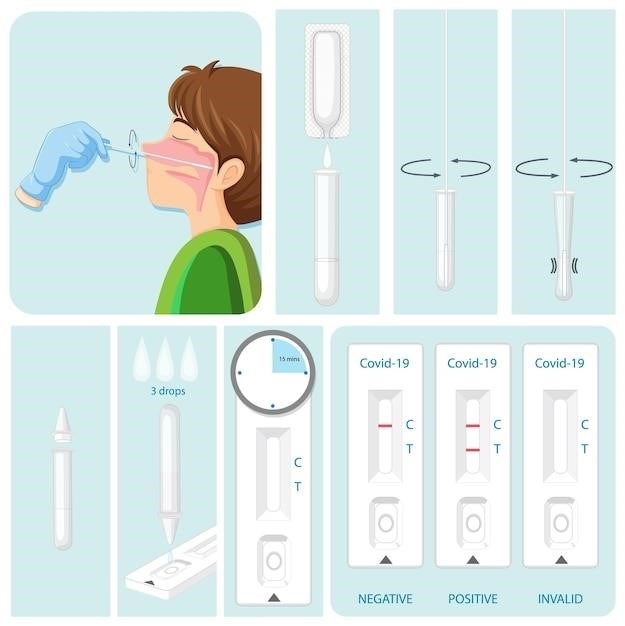Yamaha RX-V377⁚ A Comprehensive Guide
This guide provides a comprehensive overview of the Yamaha RX-V377 AV receiver, covering its key features, specifications, connectivity options, sound performance, user interface, setup and configuration, troubleshooting, comparison to similar models, and resources for finding the manual.
Introduction
The Yamaha RX-V377 is a 5.1-channel AV receiver designed to enhance your home theater experience. It offers a balance of features and performance at a reasonable price point. This receiver is a popular choice for those seeking a reliable and versatile option for connecting and controlling various audio and video components. The RX-V377 is compatible with a wide range of devices, including Blu-ray players, DVD players, gaming consoles, and streaming devices. Its user-friendly interface and intuitive controls make it easy to navigate and adjust settings. With its impressive sound quality and comprehensive features, the RX-V377 is an excellent option for home theater enthusiasts looking to elevate their entertainment experience.
Key Features and Specifications
The Yamaha RX-V377 boasts a range of features that enhance its versatility and performance. It supports 5.1-channel surround sound, providing an immersive audio experience. With a power output of 70 watts per channel at 8 ohms, it delivers clear and dynamic sound across the frequency range of 20-20 kHz. The receiver incorporates Yamaha’s signature CINEMA DSP technology, offering a range of sound modes to tailor the audio experience to different content; Furthermore, the RX-V377 features Virtual CINEMA FRONT technology that allows for a surround sound experience even without rear speakers. It also includes Extra Bass technology to enhance low-frequency response for a more powerful and impactful sound. The RX-V377 also supports 3D audio and video, allowing for a more immersive and realistic entertainment experience. The receiver is equipped with four HDMI inputs and one output, supporting 4K video pass-through with 30 frames per second. This ensures compatibility with the latest high-definition video sources. It also features an Audio Return Channel (ARC), allowing for audio signals to be transmitted from a compatible TV back to the receiver.
Connectivity Options
The Yamaha RX-V377 offers a comprehensive selection of connectivity options, catering to a wide range of audio and video sources. Its four HDMI inputs provide compatibility with modern high-definition video devices, including Blu-ray players, gaming consoles, and streaming devices. The receiver also features one HDMI output for connecting to a TV or projector. The HDMI inputs support 4K video pass-through with 30 frames per second, ensuring compatibility with the latest high-definition video sources. The receiver also features an Audio Return Channel (ARC) on the HDMI output, allowing for audio signals to be transmitted from a compatible TV back to the receiver. For analog audio connections, the RX-V377 provides optical and coaxial digital audio inputs for connecting devices like CD players or DVD players; It also includes analog RCA inputs for connecting older devices like cassette players or turntables. In addition to its video and audio connections, the RX-V377 includes an Ethernet port for network connectivity, enabling access to streaming services, internet radio, and firmware updates. It also features a USB port for connecting external storage devices like flash drives, allowing for music playback and file transfer.
Sound Performance
The Yamaha RX-V377 delivers impressive sound performance for its price point, particularly when considering its 5.1-channel surround sound capabilities. It boasts a power output of 100 watts per channel at 6 ohms, ensuring ample power for a typical home theater setup. The receiver’s discrete amplifier circuit design contributes to its clear and detailed audio reproduction, providing a rich and immersive listening experience. Yamaha’s signature CINEMA DSP technology enhances the surround sound experience, creating a realistic and enveloping soundscape with a wide soundstage. The RX-V377 also features Yamaha’s Virtual CINEMA FRONT technology, which allows for a virtual surround sound experience even without rear speakers. For those seeking enhanced bass response, the receiver’s Extra Bass feature provides a boost to the low frequencies, adding depth and impact to the sound. The receiver’s sound quality is well-suited for a variety of audio content, from movies and TV shows to music and gaming. It handles dynamic soundtracks with ease, delivering clear dialogue and powerful sound effects; Overall, the RX-V377’s sound performance is a significant highlight, delivering a satisfying audio experience for both home theater enthusiasts and casual listeners alike.
User Interface and Control
The Yamaha RX-V377 boasts a user-friendly interface designed for straightforward navigation and control. The receiver’s front panel features a clear display that shows essential information such as input source, volume level, and selected settings. The front panel also includes dedicated buttons for common functions, such as power, source selection, and volume control. The included remote control provides comprehensive access to the receiver’s features, including source selection, volume control, surround sound modes, and advanced settings. The remote control’s layout is intuitive, with clearly labeled buttons for easy operation. The receiver’s on-screen display (OSD) provides additional information and settings options in a clear and easy-to-read format. The OSD is particularly helpful for navigating through the receiver’s menus and configuring settings. The Yamaha RX-V377 also supports advanced features like HDMI control and remote control ID settings, allowing for seamless integration with other compatible devices. Overall, the receiver’s user interface and control options are designed to make setup and operation as simple and intuitive as possible, catering to both novice and experienced users.
Setup and Configuration
Setting up the Yamaha RX-V377 is a straightforward process, thanks to its user-friendly design and comprehensive instructions provided in the manual. The receiver includes a clear and concise setup guide that walks users through the initial setup steps, including connecting speakers, sources, and configuring basic settings. The receiver’s on-screen display (OSD) provides visual guidance during the setup process, making it easy to follow the steps and adjust settings. The Yamaha RX-V377 also features Yamaha’s renowned YPAO (Yamaha Parametric Room Acoustic Optimizer) system, which automatically analyzes your room acoustics and adjusts the receiver’s settings for optimal sound performance. YPAO helps optimize speaker levels, distances, and equalizer settings, ensuring a balanced and immersive sound experience. The receiver also supports various audio formats, including Dolby Digital, DTS, and DTS-HD Master Audio, and allows for custom configuration of surround sound modes to suit your preferences. For more advanced configurations, the Yamaha RX-V377 offers a wide range of settings options, including speaker size, crossover frequencies, and audio delay adjustments. The receiver’s intuitive menus and clear explanations in the manual make it easy to navigate through these settings and tailor the sound to your specific needs. Whether you’re setting up a basic home theater system or a more complex multi-room setup, the Yamaha RX-V377 provides a user-friendly and comprehensive experience, making it easy to get the most out of its features.
Troubleshooting and Common Issues
While the Yamaha RX-V377 is generally a reliable receiver, users may encounter occasional issues. The most common problems often stem from incorrect connections, faulty cables, or software glitches. The Yamaha RX-V377 user manual provides a detailed troubleshooting section that covers a wide range of issues, including no sound output, distorted audio, remote control problems, and display errors. The manual includes step-by-step instructions and helpful tips for resolving common issues. For instance, if you experience no sound output, the manual suggests checking the volume level, speaker connections, and source selection. If the audio is distorted, the manual recommends checking for faulty cables, speaker placement, and speaker settings. The manual also provides guidance on resolving issues with the remote control, such as battery replacement, pairing, and signal interference. In some cases, the issue might require a firmware update. Yamaha regularly releases firmware updates to address known issues and improve performance. Users can check for updates on Yamaha’s website and follow the instructions provided in the manual to update the firmware. If you encounter persistent issues that cannot be resolved through troubleshooting steps in the manual, it’s advisable to contact Yamaha customer support or an authorized service center for assistance.
Yamaha RX-V377 vs. Similar Models
The Yamaha RX-V377 competes with other AV receivers in the same price range, offering a blend of features and performance. When comparing the RX-V377 to similar models, it’s important to consider factors like power output, connectivity options, sound quality, and user interface. For example, the Denon AVR-X1400H is another popular choice in this category. It boasts a similar power output and connectivity features, including HDMI with ARC and support for various audio formats. However, the RX-V377 might edge out the Denon in terms of sound quality, particularly for music listening. The Onkyo TX-NR676 is another competitor, known for its user-friendly interface and robust feature set. It offers similar connectivity options and power output but might lack the refined sound quality of the RX-V377. Ultimately, the best choice for you depends on your specific needs and preferences. Consider your budget, desired features, and priorities for sound quality and user experience when making your decision. Researching reviews and comparing specifications of different models will help you determine the best fit for your home theater setup.
The Yamaha RX-V377 is a solid choice for those seeking a reliable and feature-rich AV receiver for their home theater setup. It delivers a balanced sound performance, catering to both movie enthusiasts and music lovers. Its compact design and lightweight construction make it suitable for various room sizes. The RX-V377 provides ample connectivity options, including HDMI with ARC, optical and coaxial inputs, and Bluetooth for wireless streaming. Its user-friendly interface and remote control make navigation and setup straightforward. While it may not be the most powerful receiver on the market, it offers a good balance of features and performance at an attractive price point. If you’re looking for a versatile and reliable AV receiver that can enhance your home theater experience without breaking the bank, the Yamaha RX-V377 is worth considering. Remember to research and compare it with other models in the same price range to make an informed decision based on your individual needs and preferences.
Where to Find the Yamaha RX-V377 Manual
Finding the Yamaha RX-V377 manual is a straightforward process. You have several options to access this valuable resource⁚
- Yamaha Website⁚ The official Yamaha website is a reliable source for product manuals. Navigate to the Yamaha support section and search for the RX-V377 model. You will likely find the manual in PDF format, which you can download and save for future reference.
- Online Manual Databases⁚ Websites like ManualsLib and Manualzz host extensive libraries of user manuals for various electronics products, including the Yamaha RX-V377. These platforms allow you to search for the manual directly, download it, and access it whenever needed.
- Retailer Websites⁚ Many online retailers, such as Amazon and Best Buy, provide access to product manuals on their websites. Look for the “Support” or “Manuals” section on the RX-V377 product page.
- Yamaha Customer Support⁚ If you cannot locate the manual online, you can contact Yamaha customer support directly. They can assist you with finding the manual or provide a digital copy.
It’s always advisable to have a physical or digital copy of the manual handy for quick reference, especially when troubleshooting or setting up new features.
Additional Resources
Beyond the manual, several additional resources can enhance your understanding and enjoyment of the Yamaha RX-V377. These resources offer valuable insights, troubleshooting tips, and community support⁚

- Yamaha Forums⁚ Online forums dedicated to Yamaha products, like the AVS Forum, provide a platform to connect with fellow RX-V377 owners. You can ask questions, share experiences, and find solutions to common issues.
- YouTube Tutorials⁚ Numerous YouTube channels offer instructional videos on setting up, configuring, and using the RX-V377. These videos can be particularly helpful for visual learners or those seeking step-by-step guidance.
- Online Reviews⁚ Websites like CNET, TechRadar, and What Hi-Fi? provide comprehensive reviews of the RX-V377, offering insights into its performance, features, and user experience.
- Audiophile Communities⁚ Websites and forums dedicated to audio enthusiasts can provide valuable information on speaker pairings, sound calibration, and other audio-related topics relevant to the RX-V377.
By exploring these resources, you can expand your knowledge of the Yamaha RX-V377, optimize its performance, and get the most out of your home theater experience.



Leave a Reply
You must be logged in to post a comment.